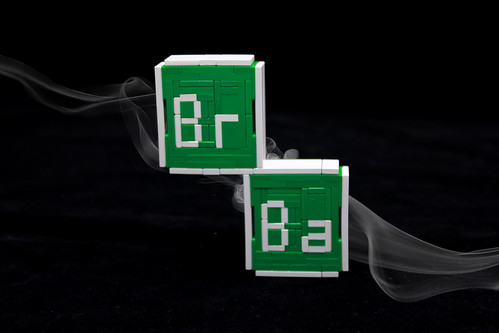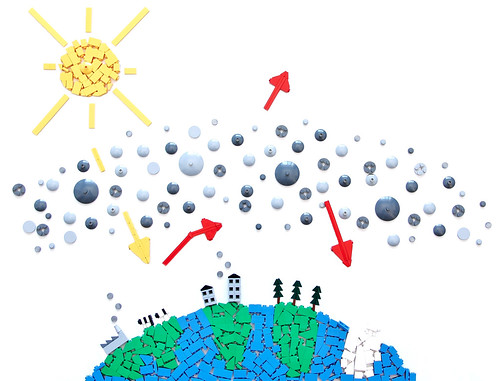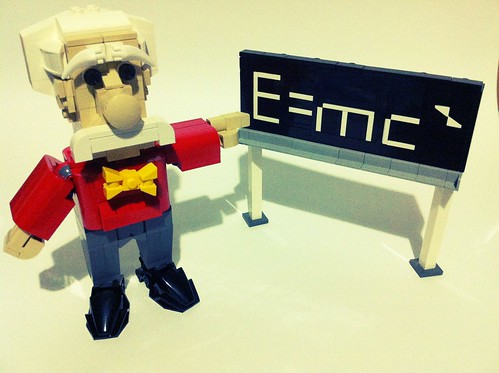
Wednesday, March 27, 2013
Breaking Barium
As a chemist I really like the show Breaking Bad, whose logo (here by Lego Junkie) involves the atomic symbols for Bromine and Barium. There are a little over a hundred different types of atoms, known as elements. What differentiates one element from another is the number of protons in the nucleus, and the arrangement of electrons and bonding properties are related to this. Bromine is an element with 35 protons in the nucleus. In the elemental form (that is, when it's just by itself and not combined with other elements to make compounds) it forms diatomic molecules - two bromines connected to each other. Br2 is largely a liquid at room temperature. It reacts readily with other compounds in a number of ways, including both radical and ionic reactions. Barium has 56 protons in the nucleus and is a metal. It easily loses two electrons to become a positively charged species in various ionic compounds.


Monday, March 18, 2013
Greenhouse effect
TheBrickAvenger teaches us about the Greenhouse effect. Light energy from the sun (in yellow) hits the earth, warming it. The earth then radiates heat (red arrows), but rather than directly escaping into space, a good portion of this heat energy coming up from the earth is absorbed by gases such as CO2 in the atmosphere. These gases then radiate energy - some up into space, but other energy back down towards the earth.


Thursday, March 14, 2013
Happy Pi Day
Man, I've got to turn in my geek card. I completely missed that today was Pi Day. In my defense, I never know what the date is. MCLegoboy built this pi. It'd be really cool if he used exactly 314 bricks.


Hydrogen
MOCathalon is an annual LEGO building contest with a series of categories. One of this year's categories is 'Just teach it!', and Finn Tegotash built a chemistry class.
Okay, class, we're going to continue with our examination of the periodic table.

Hydrogen is the simplest element, with only one proton and one electron. In molecular form it exists as H2.

Since it is the lightest element, and since gases take up the same volume of space regardless of their mass, the same volume of hydrogen is much lighter than the same volume of air (a mix of nitrogen, oxygen, carbon dioxide, water vapor, and some other things). Therefore, a balloon filled with hydrogen floats.

Hydrogen reacts with oxygen to make water. This reaction gives off a lot of energy. It is an exothermic process. Boom!

Okay, class, we're going to continue with our examination of the periodic table.

Hydrogen is the simplest element, with only one proton and one electron. In molecular form it exists as H2.

Since it is the lightest element, and since gases take up the same volume of space regardless of their mass, the same volume of hydrogen is much lighter than the same volume of air (a mix of nitrogen, oxygen, carbon dioxide, water vapor, and some other things). Therefore, a balloon filled with hydrogen floats.

Hydrogen reacts with oxygen to make water. This reaction gives off a lot of energy. It is an exothermic process. Boom!

Friday, March 1, 2013
Subscribe to:
Posts (Atom)
